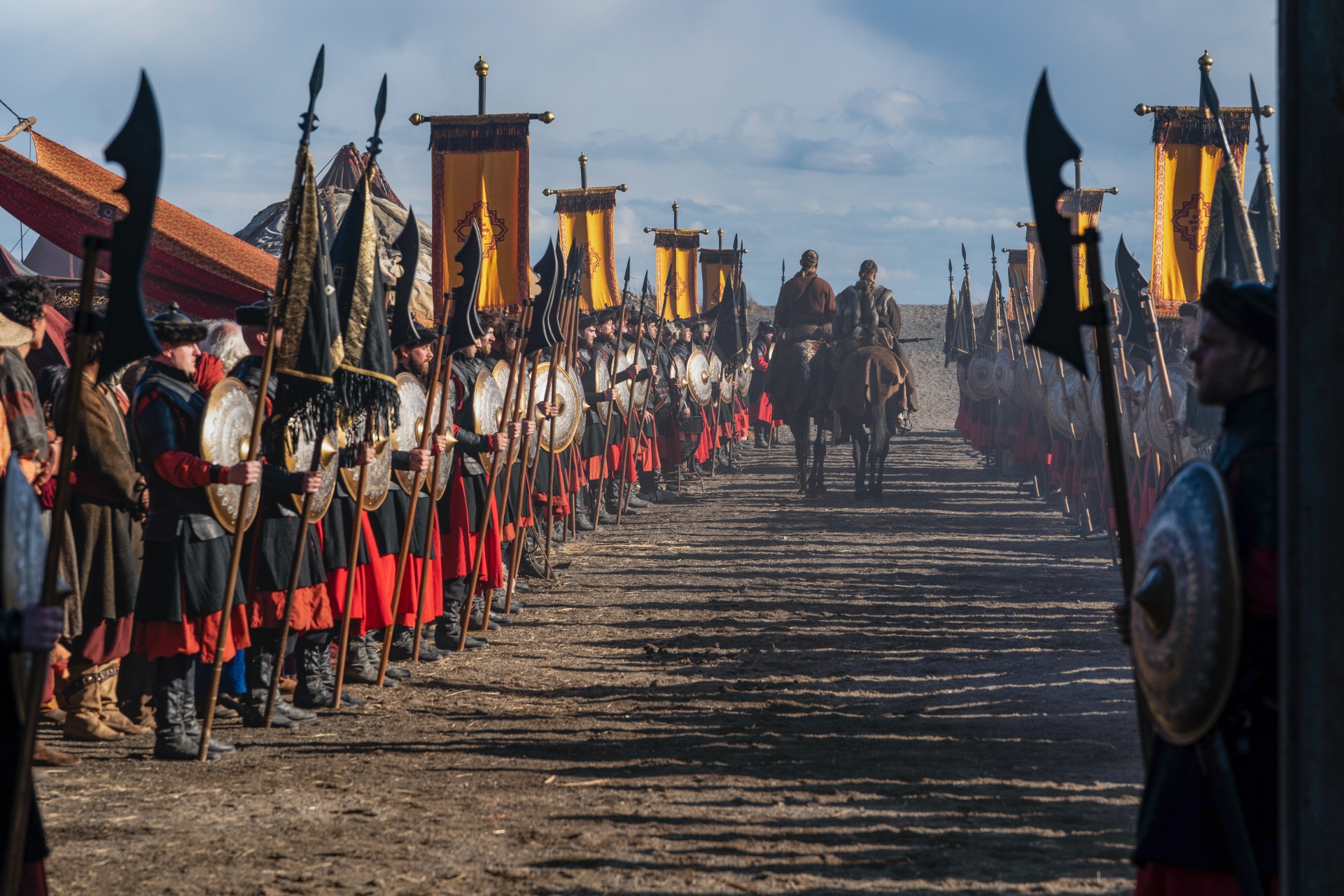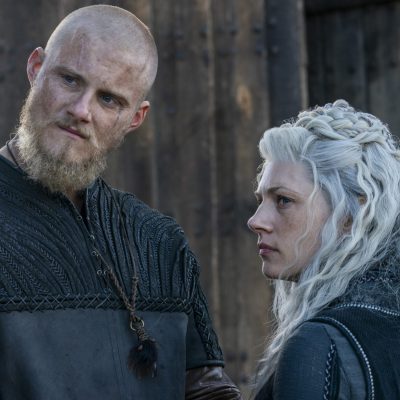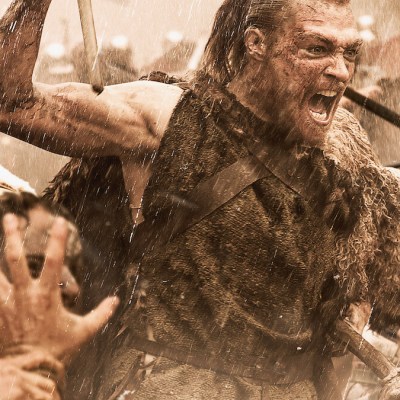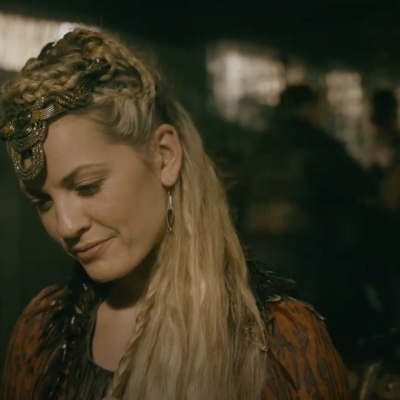This article contains spoilers for the final season of Vikings.
In its final season Vikings tied up the story of Ragnar and his sons, and ended with a pitch-perfect, almost poetic, coda. Ragnar, however, was just the beginning of the Vikings’ story.
Later this year, Netflix will bring us the saga’s concluding chapter, Vikings: Valhalla. Set more than 150 years after the events of its parent show, Vikings: Valhalla charts the Vikings’ last glorious push as a cultural force with which to be reckoned, while chronicling some of the early 11th century’s most intrepid, influential and powerful figures.
Based on the latest casting announcement, expect to encounter such historical luminaries as Leif Eriksson (Sam Corlett) and Freydis Eriksdotter (Frida Gustavsson), the children of Erik the Red; the ambitious and politically astute Emily of Normandy (Laura Berlin); the slippery Earl Godwin (David Oakes); the infamous King Cnut (Bradley Freegard) one of Europe’s most seminal and successful monarchs (and scourge of spell-checkers everywhere, henceforth to be referred to by his more Anglicised name of King Canute, for reasons of decency); and William the Conqueror, whose name and reputation very much speaks for itself. That last role has yet to be cast, for reasons that will become apparent.
What, then, can this roster of characters tell us about the timeframe, and thus the possible narrative and thematic thrust of the show?
Let’s take a look.
The Danes take the Reins
It’s often assumed that the Vikings were a homogenous force. They weren’t (not to mention that there is considerable academic pushback on what precisely constitutes a Viking). Although they were culturally similar, there was wide variation between the peoples of Norway, Sweden, and Denmark, each of whom had their own breeds of roamers, adventurers, and conquerors. The Danish Vikings were by far the most successful. Indeed, up until the last portion of the 10th century much of modern-day Northern and Eastern Britain had been known as the Danelaw, a territory within which Anglo-Saxon laws, customs and sometimes even language were subordinate to those of Denmark and the Danes.
At the beginning of the 11th Century, after an uneasy period of flux, fighting, then peace – during which Anglo Saxon autonomy was seemingly restored – Danish Vikings again resumed their attacks on the British coastline. King Ethelred the Unready at first responded to these repeated incursions by appeasing the invaders with coin, a strategy that only further incentivised their efforts. Ethelred’s follow-up strategy arguably was even less successful: he ordered the massacre of all Danes living in England; a feat that was impossible to achieve, though not for the lack of trying.
Read more
Unsurprisingly, this act precipitated great geo-political turbulence, not to mention counter-strikes and violence, all of which led to King Ethelred fleeing England for Normandy, and the Danes re-invading, and seizing the reins of power. Eventually, Canute, a Danish prince, succeeded his departed father, Sweyn Forkbeard, and became King of England.
The blurb for Vikings: Valhalla tells us that, in the show, King Canute is already King of Denmark. In history, Canute became King of England in 1016, and King of Denmark two years later. We can be reasonably sure, then, that the story begins sometime in, or not long after, 1018.
King Canute married Emma of Normandy in 1017. This union appears to have been forged with wider concerns than mere romance, as Emma previously had been married to King Ethelred, and had borne him two sons, both of whom had been – until the latest invasion – heirs to the English throne. Emma’s second marriage not only helped her hold on to power and influence, but also arguably saved the lives of her children. This political and familial jostling should make for an interesting dynamic as the show hurtles through the years.
And hurtle the show must, if William the Conqueror is to feature in its narrative, given that the man behind the Norman Conquest of England wasn’t born until 1028, the same year that King Canute added Norway to his collection of kingdoms. 1066 will doubtless be a key date, given that it was not only the beginning of William’s conquering, but also the official end of the era of the Vikings.
Interestingly, or perhaps confusingly, William the Conqueror was a descendant of Rollo, whom you might remember from a little show called Vikings? – although the character was more of a semi-mythical mish-mash than a faithfully depicted historical figure.
Way out Norway
Vikings: Valhalla isn’t going to forget about Norway, or the descendants of the Norwegian Vikings who first settled Iceland and then set off westward in search of adventure and riches.
Greenland is now an established Viking colony, and there we’ll meet Leif and Freydis. As they hailing from a fiercely pagan family, their story and dynamic will put a spotlight on how Viking society is adjusting to, and struggling against, the inexorable erosion of the old ways and Gods; as will a focus on Kattegat, where its ruler, Jarl Haakon (Caroline Henderson), isn’t quite ready to let Odin go gentle into that good night.
Read more
Leif and Freydis will, of course, lead us to the New World, where our erstwhile Viking adventurers, Ubbe and Floki, once tread. While Leif is the person whom the sagas afford the lion’s share of the fame and credit for ‘discovering’ the western reaches of North America, Freydis’ real-world ‘history’ indicates that she will be the more fun character to watch. The sagas reveal a woman who was intrepid, brave, and fearless, but almost supernaturally sociopathic. Just ask the Skraelings…
The Final Countdown
RIP the Vikings: 793 – 1066.
But long live Vikings: Valhalla. Because before twilight sets on history’s favorite raiders, we still have 48 years’ worth of blood, battles, bargaining, intrigue, injury, invasion, life, death, love and war upon which to feast.




